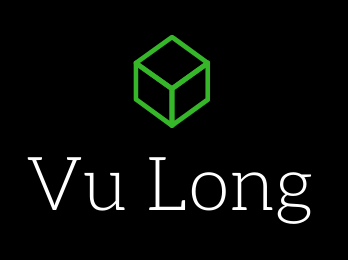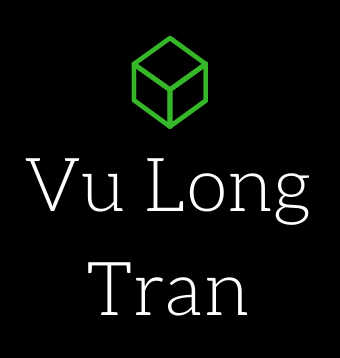As every airport is different, and varies in terms of the processes and procedures you will find yourself having to go through, here's my experience travelling from Singapore to London and back.
Leaving London at Healthrow airport
This will give you a general insight into what it's like just going into and out of London Healthrow airport, and I have also provided some basic information about how to get to London CBD from Healthrow.
Singapore to London
Leaving Singapore's Changi airport
This is about finding yourself inside Changi airport and finding your gate to fly internationally.
- Check-in at Singapore Changi airport - Check-in as with at every airport.
- International gate - Go through the International gate. You only need to show your boarding pass to the International Gate guard.
- Security check/ customs - You go through the standard security check, placing laptops, and your carry-on luggage into the tubs which go through the security scanners.
- Immigrations - Here you go through immigrations, presenting your passport and current visa (EP/ white visit card).
- Find your gate and board plane when it arrives (boarding) - You find your gate for your flight and present your ticket/ passport. At the gate you will then go through the final security check for your flight and then wait for the go ahead and just board the plane. You only need to show your ticket so they know where you seat after this. If you're coming from Australia's Melbourne Tullamarine airport (see here for the process there) this process is much different, normally you would wait for the plane to arrive at the gate then go present your passport and ticket before boarding (and you'd go through that final security check early on). Checking before the plane arrive saves more time though, but I assume it's as the airline has more staff resources to do this.
TIP: While you're waiting for your plane you can actually access Changi airport's free wireless. To obtain access, find an information desk and show them your boarding pass and passport. They will give you a temporary wireless access code which generally lasts for 2-4 hours. There are also chargers available if you need to charge your phone/ laptop.
Arriving at London Healthrow airport
Once you land in London's Healthrow airport (assuming you arrive at this airport - there are a few others in London as well) you'll:
- Unboard the plane at Healthrow airport - You wait for your turn and unboard (alight) from the plane.
- Immigrations - You then go through immigrations. These lines are generally always long, so it's best to have a book to read or some music to listen to. That, or you could always have a conversation with a random person in the queue. You will need your passport and a completed immigrations card here. Visa-wise, as I'm an Australian which is part of the Commonwealth, I'm able to travel around freely for up to 6 months without a visa.
- Pickup luggage - After you've gone through immigrations you just find where your luggage has been dropped off and head off out.
- Optional entry customs and go through security scanner exit– Now this surprises me when I compare it to Australian customs, which puts you through a gruelling customs process when you arrive, but that's as they are probably more focused on ensuring that their local industries remain protected from a quarantine perspective. But in terms of London, if you know you might have brought something that might not be acceptable then you just need to make sure you've checked and declared it. I've found the same process in Singapore too, once you have gone through immigrations then you simply find the exit for the airport. Now, while I say this this doesn't mean they don't check (I'm sure they do), but they don't go through exhausting means to do so openly as part of the process - more so it's done behind the scenes.
- Leave airport - So you've gone through that. You can leave now and greet the crowds of people waving signs with names and those waiting for love ones to come home.
Traveling to London
-1.jpg?width=400&height=238&name=London+2011+(53)-1.jpg) |
| London Tower Bridge |
At London's Healthrow airport you have a few options to get into town, i.e., the CBD:
- Healthrow Express train (to Paddington station) - This is a fast train that goes from the airport straight to Paddington station in 15 minutes. At Paddington there are connecting trains, buses and taxis to continue you journey. Details on the train : https://www.heathrowexpress.com/
- Normal trains (The London Tube) - The normal public transport system, so you are catching a normal train which travels overground and underground in and around London. This is a cheaper option compared to the Healthrow Express but it's slower, as it takes about an hour to get into the CBD. If you have time and like seeing how the locals normally travel - I'd say go with this option. Here are some details on the tickets for the travelling this way.
- Oyster cards - If you're choosing this option, buy an Oyster card which automatically finds the cheapest fare for you depending on how often and which zone you use it. You can use this on a bus or train.
- Travelcards - Travelcards (all day travel type cards) are available too, but you'll have to think about which zones you'll find yourself and for how long you're travelling. You can use this on a bus or train.
- Taxis - These are also called the Black Cabs, but they are notoriously expensive. That's basically the cabs give you a limo-style experience, with leather seats and the driver dressed up in a suit with gloves and all. https://www.londonblackcabs.co.uk/
- Buses - I believe there is a bus station there at Healthrow airport, though I didn't get a chance to see it. Buses are cheaper than trains to use but they're trickier to navigate.
Leaving London at Healthrow airport
Leaving Healthrow airport
- Check-in - You go through the standard check-ins.
- International gate - You go through the International Gate presenting your passport and boarding pass (ticket) to go through.
- Security - You go through the standard security checks. All items under 100mls need to be in a clear plastic bag and presented to security. They actually provide clear plastic bags for you to use.
- Immigration - You go through immigrations with your passport and ticket, so they can stamp you out of the country.
- General waiting area - There are large waiting areas for your plane after you go through Immigrations, so you can wait around there or go shopping for duty-free, or eat while you're waiting for your plane.
- Find your gate and board your plane - Once your gate has been determined, you can head to the gate where you present your passport and ticket. Once through, you sit in the waiting area waiting for your plane. If I recall correctly there may be an additional security check as well as part of this process, as it felt very familiar to Singapore's Changi airport process.
Arriving at Singapore Changi airport
- Unboard plane - You wait your turn and unboard the plane as per usual.
- Check-in at immigration - Once you are off your plane, you need to check in with immigrations. Here you need to complete an immigrations form/ card. There are two types of lines here, with express lines for Singaporean PRs/ locals, and another set of lines for non-locals. Those holding an EP (Employment Pass) can use fingerprinting or manual entry. Locals/ PRs and EP holders from my understanding do not need to complete the immigrations card, as their details are in the system already and they just need to put in your returning details (such as date arrived, etc.)
- Pick up luggage - Once you're through immigrations, pick up your luggage.
- Customs and leave airport - You can now through customs if you have something to declare, otherwise you can leave the airport.
That's pretty much what I went through traveling through in and around the airports. Things may change of course, but I hope it helps you have a general understanding of what to expect before you arrive.



